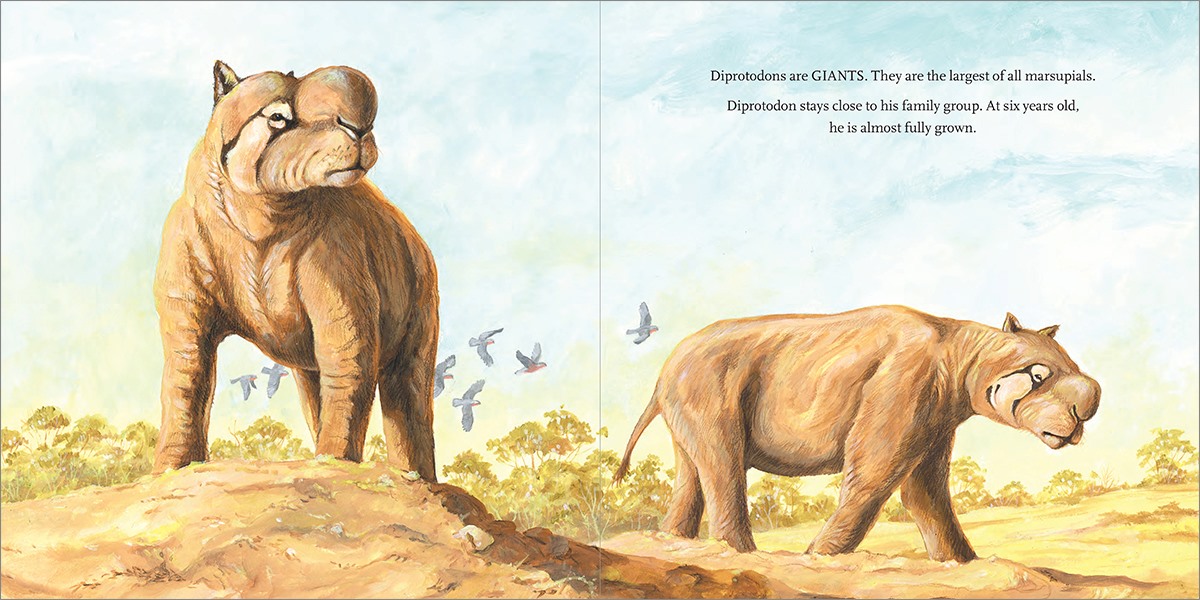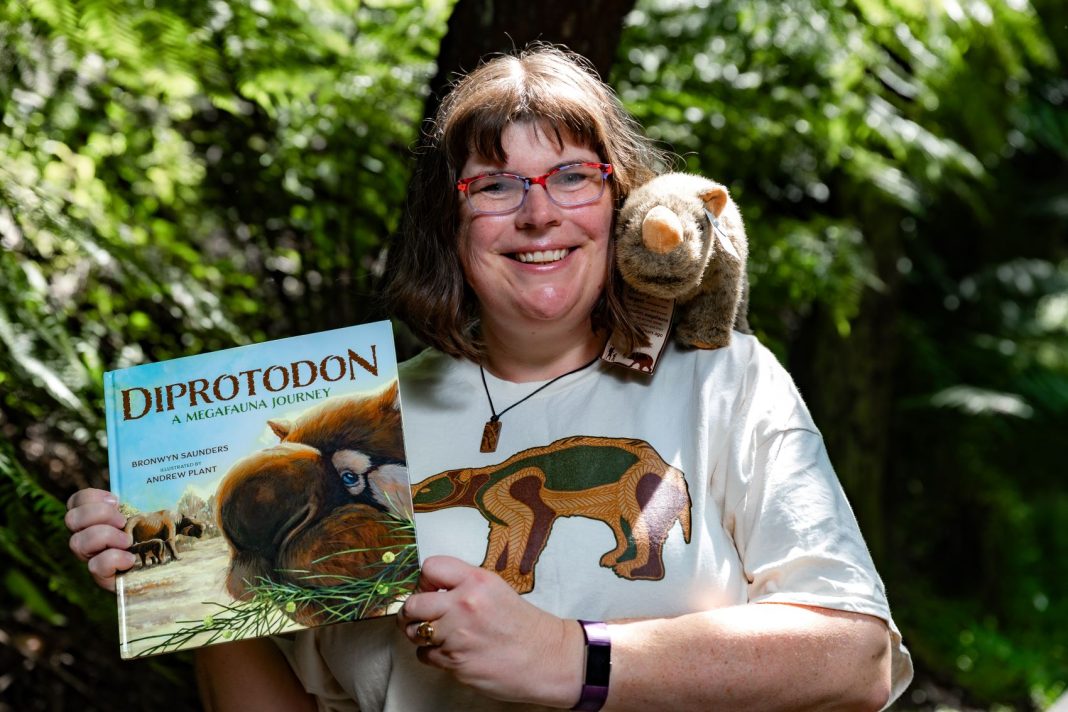There is no denying that dinosaurs like the T-Rex are the superstars of ancient times, however between the times of dinosaurs and now, lived incredible Megafauna that don’t seem to get any credit. Local author Bronwyn Saunders shines the light on one of these overlooked Australian creatures in Diprotodon: A Megafauna Journey.
“We all know about the woolly mammoth but that’s in Europe. Our animals are unique now, but they were even more unique back then. We’re talking 60,000 to 1.1 million years ago, that’s just mind-blowing and these animals are predominantly marsupials as well,” says Ms Saunders.
Wanting to tell the story of the biggest marsupial that ever lived, the Diprotodon, which means two forward teeth, Ms Saunders and her story received 11 rejections before being picked up by CSIRO publishing. Connecting the author with illustrator Andrew Plant, the pair worked out their vision for the creature, agreeing it had camel-like lips.
Released in October last year, Ms Saunders says the book is to correct the fact that she was part of two or three generations that were never taught about Megafauna growing up. The story follows a young Diprotodon who gets separated from his family.
“Without his herd even though he’s three metres long, two metres tall, the same size as a black rhino and weighs up to 2,700kg – which is equivalent to two rhinos – he is vulnerable. It’s the separation and the fact that he can’t depend on water sources. He is alone, so it’s about how he copes with the climate with the other animals and how he finds his way.”
Including facts in the story, such as the creature’s ability to run as fast as a camel and its need to eat 150kg of food every day, Ms. Saunders hopes to encourage a love of palaeontology.
“Tell everyone in Australia about these animals because we need to know. We need to know how precious their resources are and where they are and why they’re unique and why we should care,” she says.

Palaeontologist Rod Wells first discovered bone deposits of the Diprotodon, an Ice Age creature, at the Naracoorte Caves in South Australia back in 1969.
Growing up not too far from Naracoorte, Ms Saunders would visit the caves with her family every year. Receiving a World Heritage Area Listing in 1994, a statue was erected to commemorate the find, Ms Saunders saw it when showing her fiancée places from her childhood.
“That’s when I fell in love with Diprotodons, we heard about them and during the tour I was told that they were carnivorous. That was then found to be a tall tale, but that was the moment I fell in love with it and I just couldn’t get enough of them,” she says.
Researching the creature as much as she could, Ms Saunders was also looking for a new job. She decided to pursue a writing career and joined a writer’s group. After receiving mentorship, the budding author got serious about piecing together this story and got in contact with her old uni.
“I called Flinders University because I knew they had a long relationship with Naracoorte Caves where there’s a plethora of bones in these caves that have been kept. You can find them the way the animal died and it is just mind-blowing how you’re able to do that,” says Ms Saunders.
As Mr Wells is Professor Emeritus with the University, Ms Saunders was able to connect directly with him. Generous with his time and knowledge, Ms Saunders sought Mr Wells’ advice on several specifics within the picture book, which he was happy to give.
“When I didn’t quite understand if I had it right, this animal, even though he is so big, can get onto his two back legs to reach things with its prehensile lip to be able to eat all the food he needs.”
Recommended for ages six to nine, Ms Saunders believes two to 200 is more fitting with everyone able to enjoy learning about these ancient creatures. She says anyone can find enjoyment in the bizarre facts about the Megafauna, like the fact it was named after two tusks in its lower jaw.
“The animal uses it to help him dig up roots and that sort of thing. He’s got the same movement as we do with our jaw except his jaw is much bigger than ours,” says Ms Saunders.
Releasing the book was just the first step in the mission to spread the word about Megafauna, Ms Saunders is available for talks and school visits, where she can further educate audiences on the amazing creatures.
Get your copy of Diprotodon: A Megafauna Journey from local booksellers or; publish.csiro.au and keep up to date with Bronwyn Saunders; bronwynsaunders.wixsite.com
Canberra Daily is keen to hear from you about a story idea in the Canberra and surrounding region. Click here to submit a news tip.



